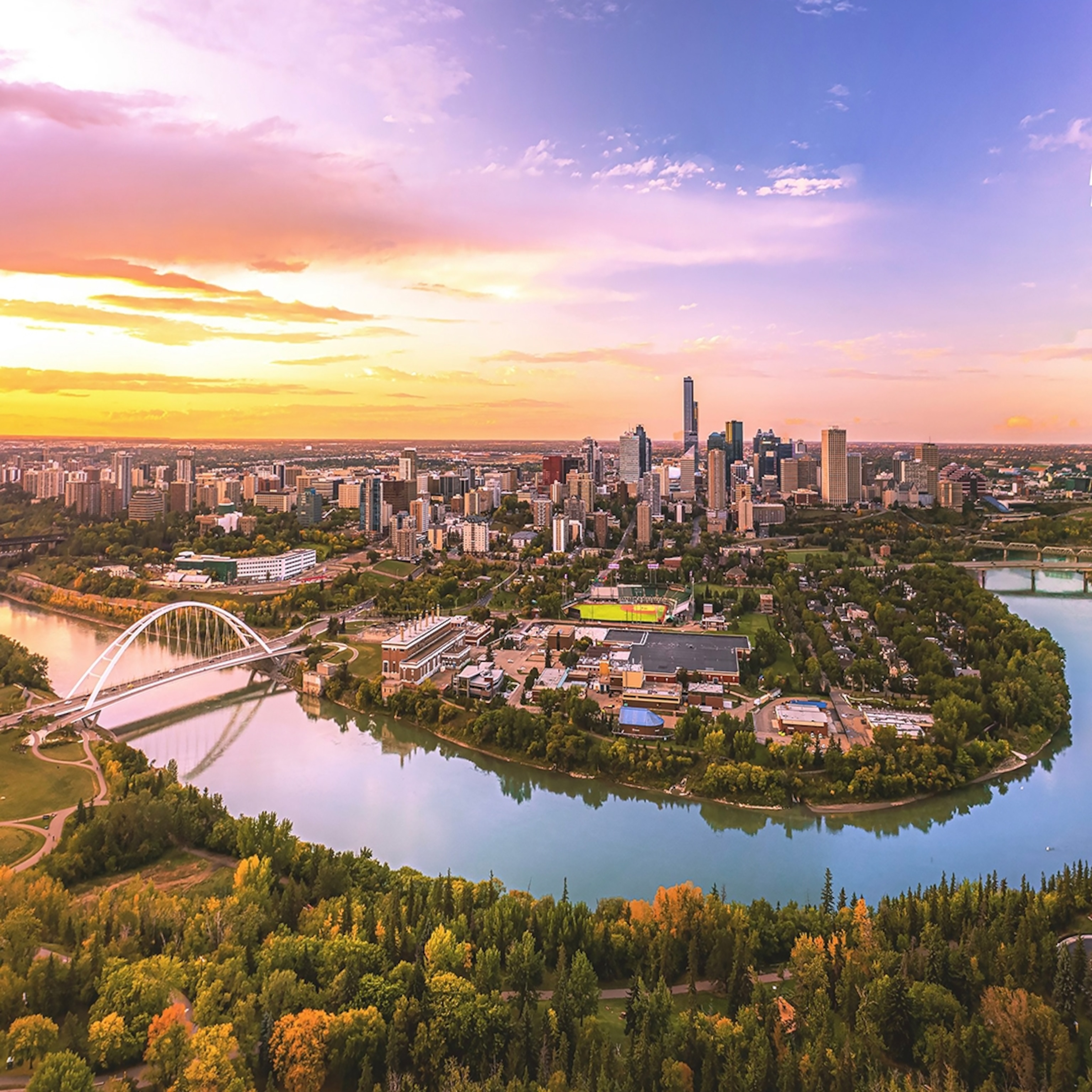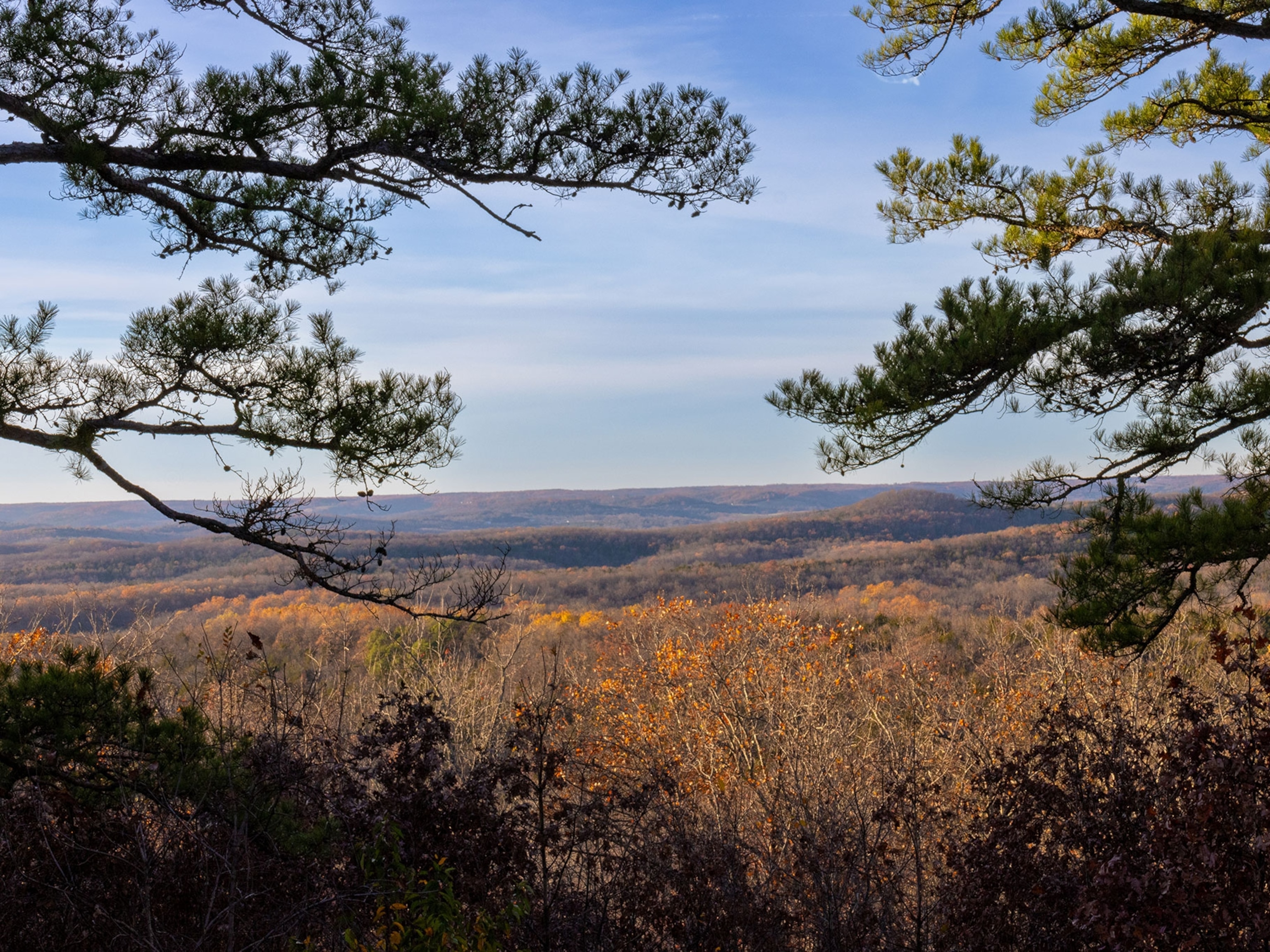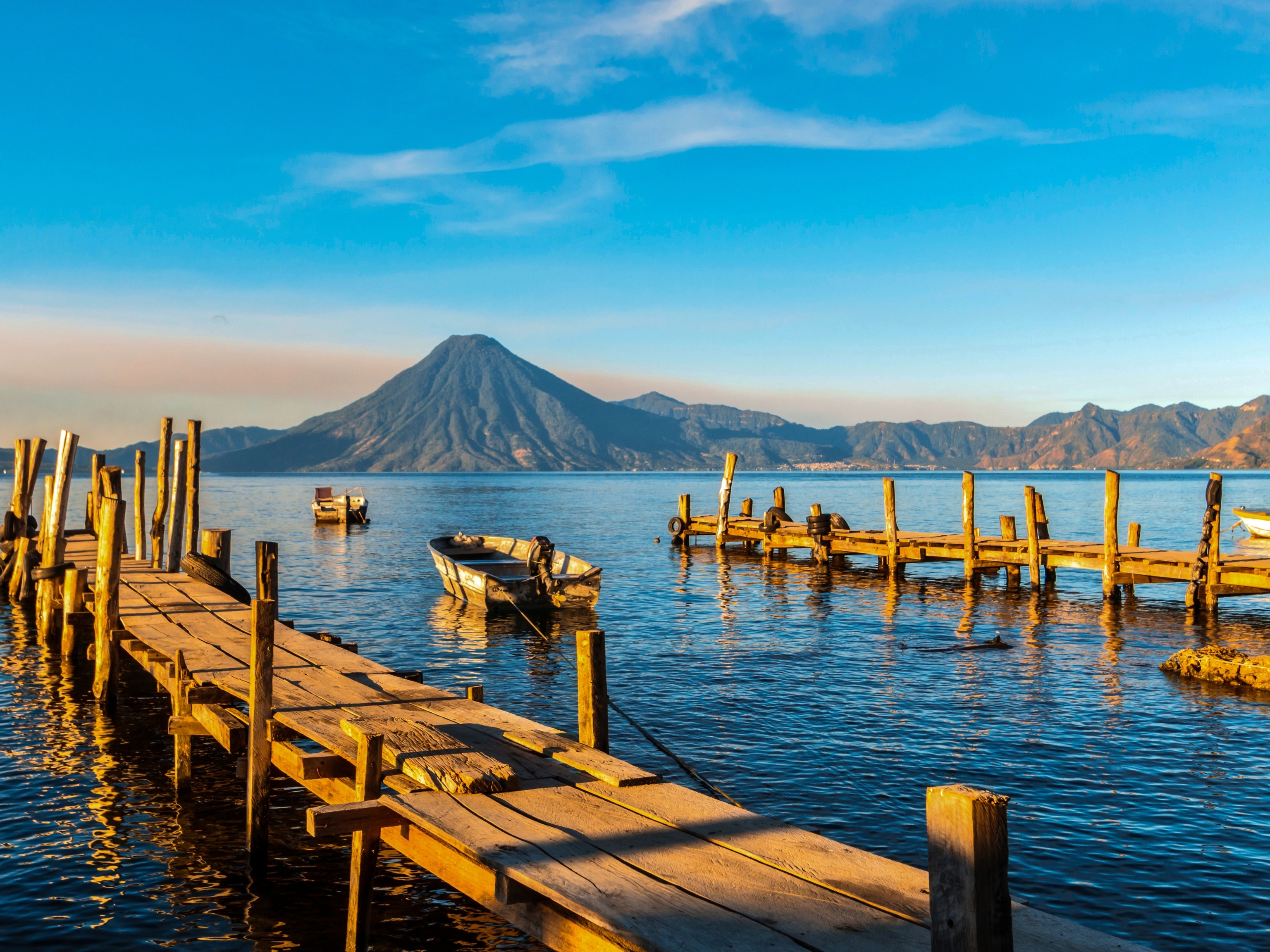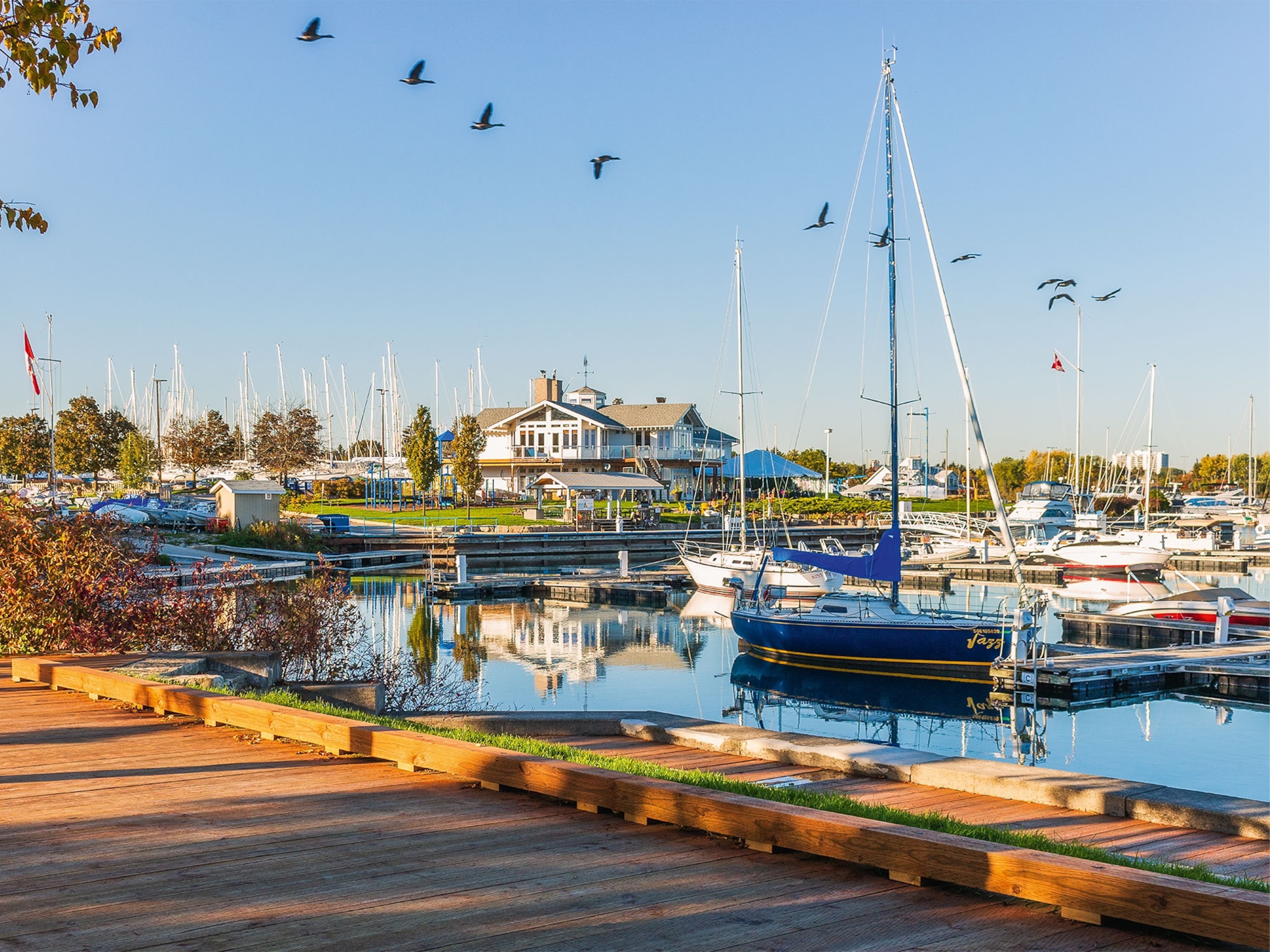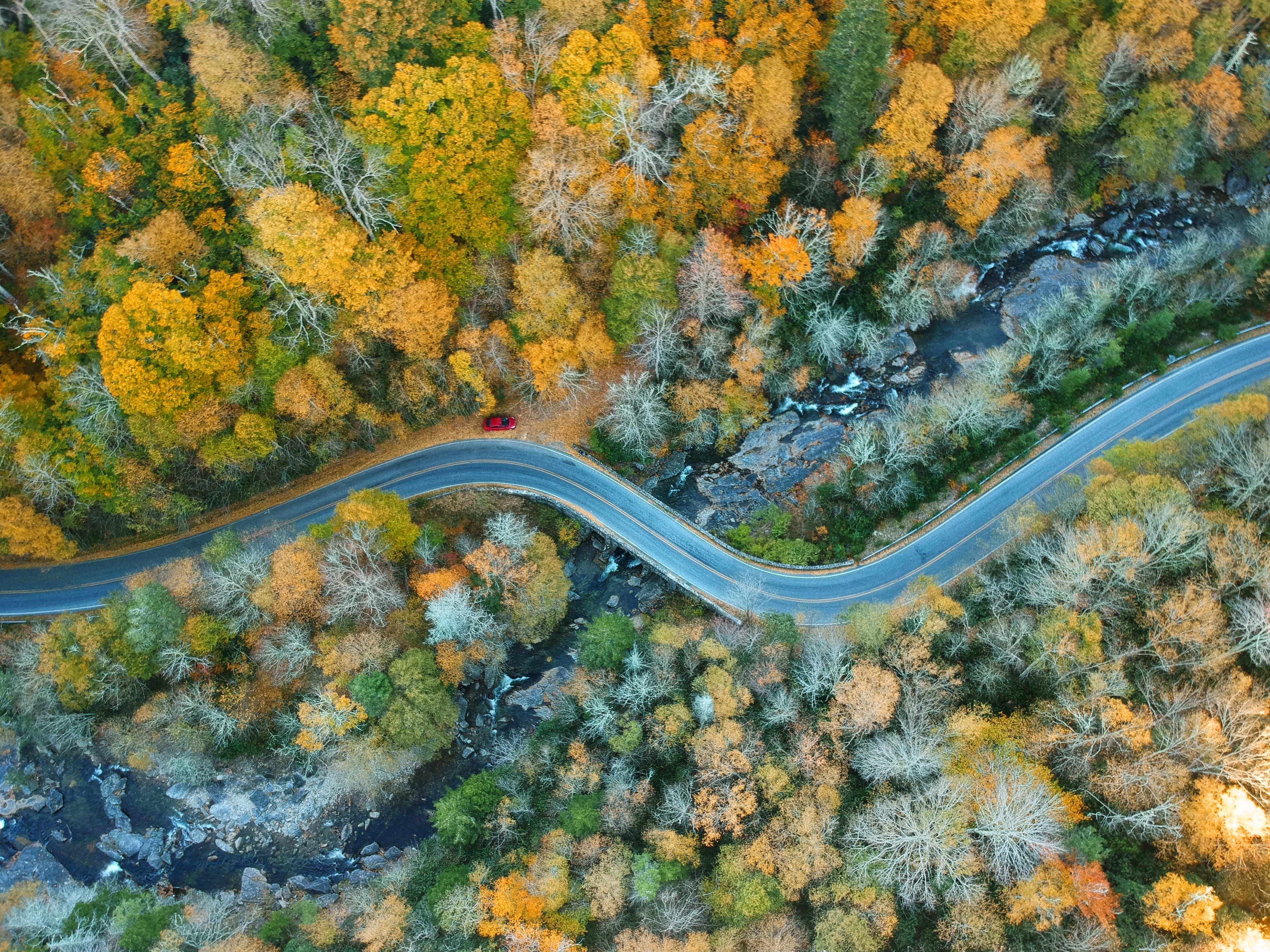
9 reasons to visit the American South
The US is a melting pot of cultures, creatures and cuisines. From oysters to Orange Beach, spoonbills to the Smoky Mountains, here are nine reasons to visit the South.
The Outer Banks, the Ozarks, Route 66… if we’ve heard of them, it’s likely our knowledge has passed through the lens of Hollywood. In reality, the American South is vast and diverse, united by a language yet distanced by geography. It subverts expectations, defies cliché. To truly know the states, you have to be there.
For one thing, they’re more sophisticated than their lore would have you believe. Think you know the Ozarks? Well, around the Missouri plateaus, esteemed chefs are melding Appalachian and indigenous flavours for discerning diners from St Louis to Springfield. And winemakers are plumbing the vineyards for European-grade Chardonels to serve alongside. Meanwhile, over the river in Kentucky, bourbon is being elevated by speakeasies and small-batch craft distilleries: they call it ‘urban bourbon’.
Arkansas is often overlooked in the race to discover the South. Yet just west of Little Rock, you can sink into an ancient thermal spring, then virtually disappear into the wild hickory forests and mountain trails, peeking over the clouds for a reminder of just how inconceivably vast and undeveloped this global powerhouse can be.
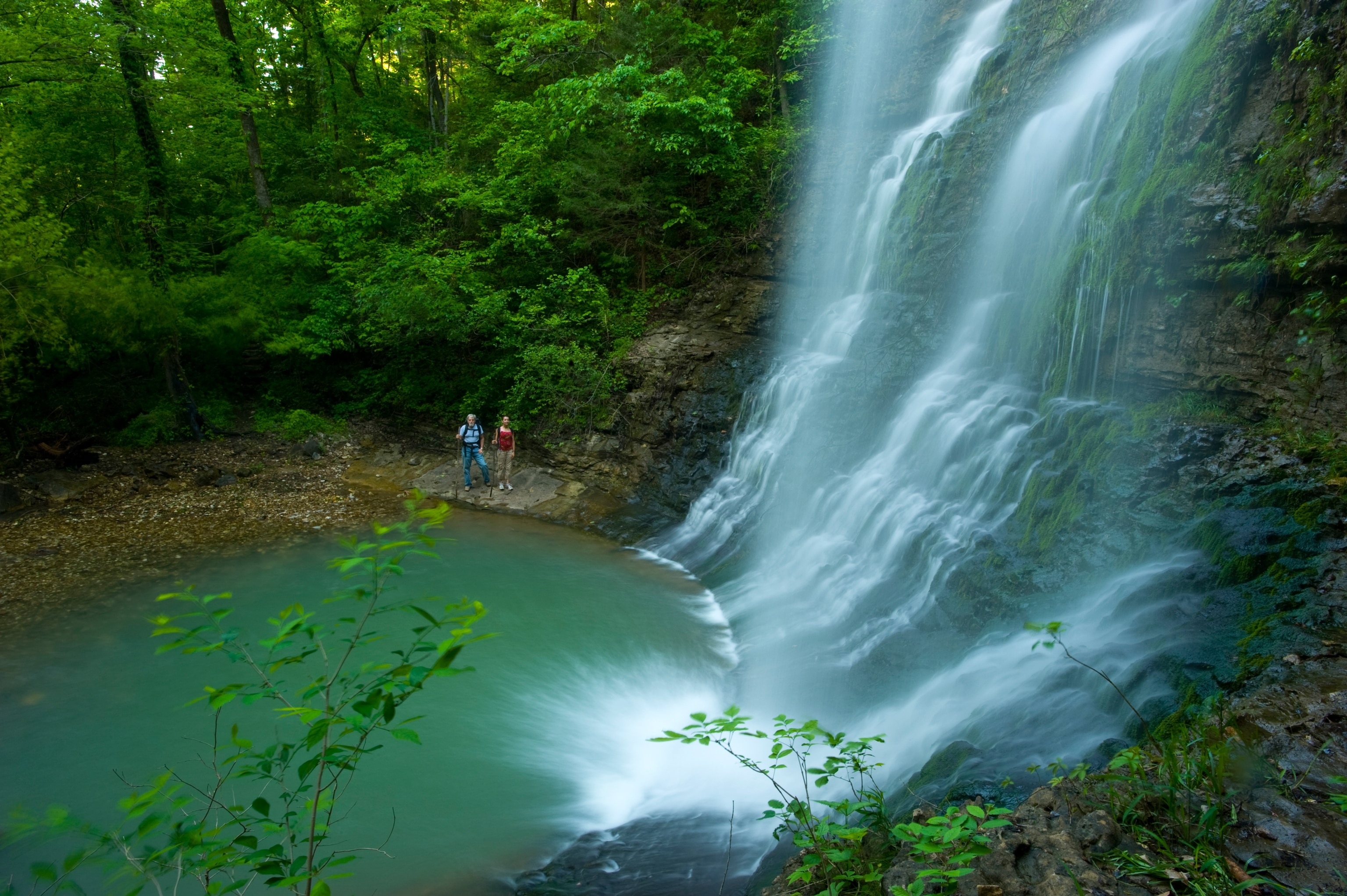
Next door but a world away is Mississippi, a haven for Southern blues and a country music stalwart to rival Tennessee. You can’t drive 10 minutes on Highway 61 — the so-called Blues Highway — without a turnoff for a legendary juke joint. In Tennessee, meanwhile, the locals have turned their attention to the abundance of wild ingredients and put them to work in time-honoured recipes tweaked for new generations. Leave Nashville for the Great Smoky Mountains and sample Appalachian cooking in a classic red barn plucked from a Grant Wood painting.
Travellers have flocked to the coastal South for generations, but few can say they’ve explored the dunes of the wispy-thin barrier islands, or paddled over the briny bay to slurp North Carolina oysters straight from the sea bed. Fewer still have embarked on a seafood safari in the backwaters of Alabama. On the Gulf Coast, the state’s historic port city of Mobile is a shellfish haven, a place to bow at an altar of ice heaped with sea creatures.
And though many are familiar with there fined grandeur of the coastal cities, with their antebellum architecture and special melting-pot character, there’s so much more to the Southern states than their sumptuous urban fabric. Take Louisiana: down on the bayou, a lush wetland dripping with Spanish moss, frogs and gators steal the show with their swampy song and dance. And bird watchers get an eyeful of long-legged seabirds anchored on the sultry coast. South Carolina, meanwhile, refuses to be pigeon holed by the glamour and gourmet heft of Charleston, its coastal gem. The folks living inland uphold centuries old traditions of down-home Southern barbecue, distinguished by a tangy peppery mustard sauce. Pit-masters from Greenville to Columbia, the state capital, show off their culinary chops on spit-roasted whole hog drenched in the stuff. The vibe here is easy. And that’s as addictive as anything. EH
1. Go on a hike in Arkansas
Arkansas Rippling hills under a blanket of woodland, waterfalls rushing over rocky ledges, sky-scraping peaks, stooping caverns — Arkansas’ ‘Natural State’ nickname sets heady expectations. Happily, the state delivers on all these fronts and there’s a good network of hiking trails that’ll get you straight to its wild heart. Lovers of the outdoors should focus on Arkansas’ bucolic western reaches, where the Ozark and Ouachita mountain regions serve up a feast of natural wonders.
You’ll get maximum reward with minimal effort on an easy 1.7-mile jaunt through Hot Springs National Park. The park safeguards ancient thermal waters and a series of century-old bathhouses, but this trail — which is well marked and maintained — is all about the peaks. The route reaches a mighty 994ft as it curls across the summit of Hot Springs Mountain, part of the Ouachita range. Waters from the western face of this mountain feed the park’s springs, and various overlooks grant views of the surrounding forested peaks. If you want to stretch your legs further, you can add on the connecting Honeysuckle Trail and the short Peak Trail — the latter offers panoramas from the 216ft Hot Springs Mountain Tower.
For a moderate pace, The Ozark National Forest spreads out in the north western reaches of Arkansas, enveloping hilly oak and hickory forests and creekside sycamores and willows. Running through it like a vein is the Whitaker Point Trail, one of the region’s most popular hiking routes. You’ll wend your way into hardwood thickets, skirt cliff edges and pass waterfalls and wildflowers, as you make your way towards the trail’s glittering finale. Whitaker Point, or Hawksbill Crag, is a striking tongue of sandstone that juts out over the cloud-cloaked canopy and the Buffalo National River. The round trip is just under three miles. JA
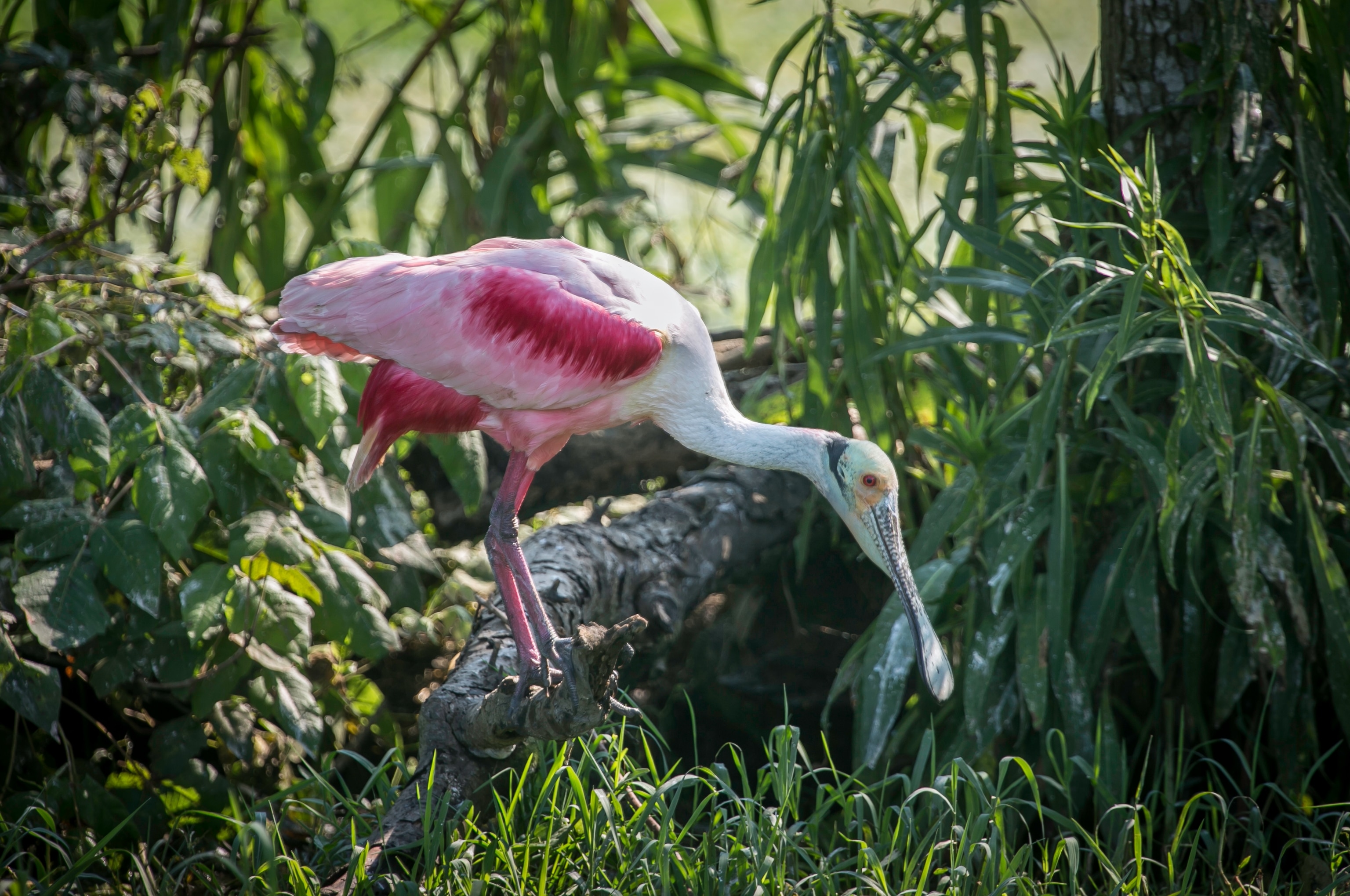
2. Discover the wildlife in Louisiana
Naturalist-led boat and kayak tours bring alligator-filled swamps and lakes to life, while boardwalk trails and waterside lodgings get you close to bountiful flora and fauna. Here are three ways to discover Louisiana’s wildlife.
Join 'Spring in the Swamp' at Jean Lafitte National Historical Park and Preserve
Named after the French pirate who sailed the Gulf of Mexico in the early 1800s, this preserve is an oasis of bayous, boardwalks and mysterious maritime history. One of the park’s six sites, the Barataria Preserve protects a particularly rich area of swamps and marshes. It’s also where the annual ‘Spring in the Swamp’ event takes place. Programming includes activities such as ranger-led canoe tours; a nightly ‘frog watch’, where visitors are invited to listen in to the amphibians’ dusk chorus; and naturalist-led sessions for kids.
Stay in a lakefront cabin at Lake Fausse Pointe State Park
Stitched into the Atchafalaya Swamp — the largest of its kind in the region at almost one million acres — Lake Fausse Pointe State Park is a great base for exploring the waters. Fully immerse yourself in the wetland by booking one of the rustic cabins that inch right up to the side of the swamp. The deluxe options are family-sized, plus amenities including bedding and cookware — though the real draw is a front-row view of the swamp, where you might see a great blue heron diving for its dinner. Beyond your waterside perch, a boat launch provides access to Spanish-moss-cloaked bayous — there’s also a seven-mile-long canoe route and a trio of nature trails.
Take to the boardwalks of the Cypress Island Preserve
If you’re a bird-lover, make a beeline for the swamp-knitted expanse of the Cypress Island Preserve. As winter tightens its grip, hordes of migratory species descend on this 9,500-acre site, making their nests in a jade-coloured canopy of cypress and tupelo trees. Look out for pink-flushed roseate spoonbills or snowy egrets with their distinctive yellow feet.The best way to explore the preserve is from the boardwalk trail, which beats a 2.5-mile course through the wetlands. And be sure to drop in on the visitor centre, where cheerful guides will brief you on the various species the park protects. JA
3. Explore Mississippi's musical history
As the soulful cradle of the Blues, the musical heritage of Mississippi has forever shaped the soundtrack of the US. But, alongside the haunting hum of bluesy harmonicas, you’ll also hear the sweet twang of banjos playing country ditties and Southern authors waxing lyrical. Follow these revealing routes through Mississippi to explore a cultural hotbed where history meets harmony.
Mississippi Blues Trail
A road trip along Highway 61, the US’s fabled musical highway, cuts through the beating heart of the Mississippi Delta, a region that’s produced some of the greatest blues musicians of all time. The first stop should be the Clarksdale Crossroads, where legend has it Robert Johnson traded his soul with the devil in return for his formidable talents. At the Little Zion Church in Greenwood, fans still leave liquor bottles at the guitar virtuoso’s graveside. Next, head to the recently updated BB King Museum and Delta Interpretive Center in Indianola, stopping off along the way at rootsy juke joints such as Morgan Freeman’s Ground Zero to refuel on crispy fried chicken, while being serenaded by electrifying live music sets. In the state capital of Jackson, you’ll find a new marker celebrating unsung female recording artist Dorothy Moore. This pioneering blues singer, whose hits included the GRAMMY-nominated Misty Blue, took control of her career by founding her own record label, trailblazing a route for women artists in her wake.
Mississippi Country Music Trail
While blues music gets main billing in Mississippi, country music is the state’s undisputed fast-picking support act. Stars from the Magnolia State run the gauntlet from the ‘Father of Country Music’ Jimmie Rodgers, right up to contemporary hitmaker Faith Hill, via musical titans Tammy Wynette, Charley Pride and the swivel-hipped Elvis Presley. This boot-stomping trail connects the dots between Mississippi’s acclaimed country musicians and the road houses, honky-tonks and front porches where they honed their craft. The latest must-visit is the Marty Stuart’s Congress of Country Music in Philadelphia. Housed in a former cathedral, this museum boasts the largest private collection of country music artefacts in the world. ZG
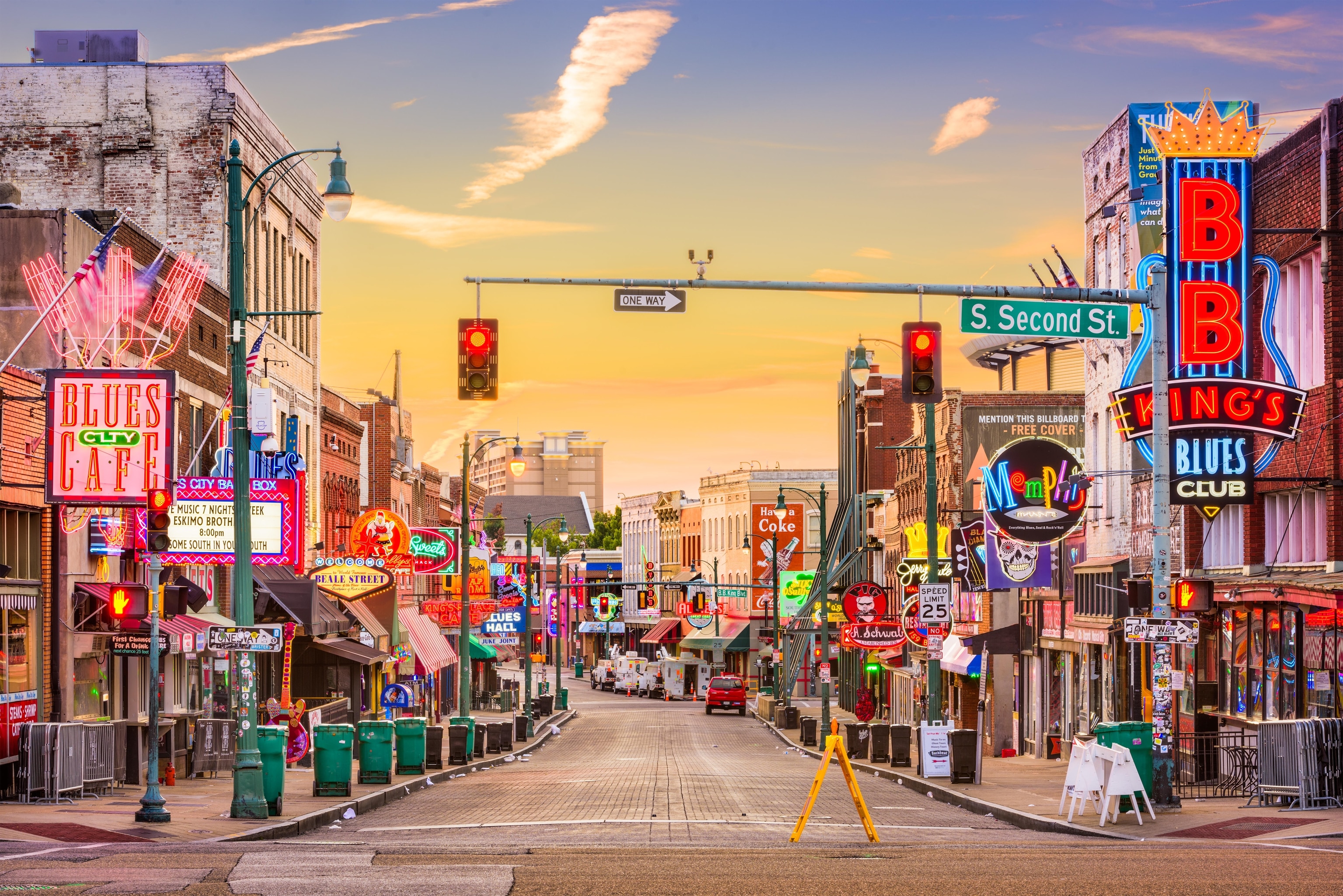
4. Try Tennessee's farm-to-fork fare
Growing up as the daughter of a nature-loving biologist meant that chef Cassidee Dabney walked on the wild side. Following an adventurous childhood spent cultivating mushrooms and roaming the US National Parks, she finally put down roots in Townsend, tucked into the foothills of the majestic Great Smoky Mountains in eastern Tennessee. It’s at the acclaimed 68-room Blackberry Farm hotel, that executive chef Dabney can still be found striding out into the wilderness, foraging hazelnuts and garlic for the evening dining service.
As a major player in the elevation of hyper-local Southern cooking, Blackberry Farm has put the concept of ‘foothills cuisine’ — which taps into the wisdom passed down through generations of mountain dwellers and the natural rhythms of the local Appalachian ingredients — on the gourmet map. At the helm of The Barn, the candlelit timber-frame restaurant situated in the grounds at Blackberry Farm, Dabney and her team serve up a constantly changing menu, which is all about rustic refinement and delicious homegrown produce.
Continue onto RT Lodge, a 58-room woodland retreat set in the shadows of the lush Great Smoky Mountains, chef Trevor Stockton also taps into the local landscape for culinary inspiration. Having grown up on a Tennessee farm, Trevor learnt to cook, preserve and pickle ingredients at the apron strings of his father. This early childhood education, of working with what’s to hand, has helped shape the dazzling menu at the RT Lodge Restaurant, with showstoppers including creamy made-from-scratch pimento cheese and rainbow trout crowned under a pecan crust. Post meal, pull up a chair at RT Lodge’s roaring firepit to toast s’mores and gaze up at the stars, far brighter than you’ll see in any city. ZG
5. Enjoy North Carolina's oysters
Before the pandemic, coastal North Carolina embraced a new ambition, which has become for oyster-lovers what Napa Valley is to wine-lovers. In 2020, the North Carolina Oyster Trail launched with an online map of major sites for spotting, purchasing, eating and celebrating oysters. What’s made this possible is the proliferation of oyster farming in this stretch of the Eastern Seaboard.
Unlike the wild kind, farmed oysters don’t spawn and grow according to season — they mature year-round to a uniform size that looks tantalising by the half-shell on a bed of ice. Small-scale growers nurture them from minuscule spat, and ‘plant’ them in mesh beds that bob on the water. And together they’ve put the state back at the shucking-edge of the oyster business. “Our first season, we worked with two oyster farmers,” says Sue Hill of Down East Mariculture, a hatchery providing farmers along the coast with oyster seedlings, or ‘spat’. “Five seasons later, we now work with 64.”
Operations like Hill’s are the heart and soul of the Oyster Trail, offering the sort of experiences that make a holiday. At Slash Creek Oysters up the coast on Pamlico Sound, Katherine McGlade and Spurgeon Stowe take visitors round their farm on a boat called Half Shell to watch tidal seawater wash through blooming molluscs. And at Oysters Carolina on the shellfish sanctuary of Harkers Island, local legend Ryan Bethea conducts tasting odysseys around the salty Back Sound by kayak.
Blue Water Grill, a casual, woody affair on Roanoke Island with fishing nets hanging from the rafters, has always managed to elevate the oyster, much to the delight of longtime customers. The restaurant is celebrated for its October oyster roasts and bloody Mary pairings. Now, with the mariculture boom, owner Scott Shields no longer has to dispel the notion that oysters shouldn’t be eaten in a month without an ‘r’. Oyster farms override that old prohibition, which is linked to regulations for the wild oyster harvest.
For those seduced by a fleshy oyster doused with jalapeno remoulade, there’s no better setting for slurping than a family business whose owners fish to live and live to fish. As for the tropical climate, 400-year history and inconceivable quiet… they’re like the spicy dash of Tabasco on top. EH

6. Make a culinary pitstop on Missouri's Route 66's
The southern region of Missouri is a land blanketed with flourishing woodland, its rivers bursting with fish. But if you think this area’s diet just boils down to the traditional staples of skillet-cooked corn bread and fruity cobblers, then think again. A hip urban eatery is honouring the area’s Native American history, its Route 66 highway serves up a slice of pure old-school Americana, while a blossoming wine growing region is attracting visitors to its tranquil lake-fronted vineyards.
Tucked between a patchwork of smouldering barbecue joints and blues bars, the Bulrush restaurant in St Louis is well worth seeking out. From his slick, low-lit dining room in the Grand Center Arts District, chef Rob Connoley is putting his own progressive spin on the indigenous foodways of Missouri. Pioneering the concept of ‘reparative restauranting’, the James Beard Award finalist has taken a deep dive into the culinary history of the Ozarks, the mountainous region in the south of the state, resurfacing with a menu that acknowledges and honours the often-overlooked communities that have called this wild landscape home — from the Native American tribes and enslaved residents to the early Euro-Appalachian immigrants.
Make a quick pitstop in Lebanon at Dowd’s Catfish and BBQ. Passing the shiny row of Harley-Davidsons parked out the front, inside, this laidback local institution serves up freshly caught southern-fried catfish and fiery smoked hot links. Walk it off with a stroll through the Route 66 Museum where you will see recreations of a 1950s petrol station and classic diner along with an expansive collection of Route 66 memorabilia. ZG
7. Taste Alabama's seafood
From creative chefs elevating southern cuisine to new heights to coastal shacks serving up fresh-out-of-the-sea platters, Alabama’s rich and varied landscape is reflected in its unique food.
Start at the city of Mobile, situated by the warm waters of the Gulf Coast. Amid boulevards lined with historic homes, their balconies laced with ornate ironwork, you’ll discover restaurants where handwritten menus sing of the sea. Freshly plucked oysters are a pearly favourite in Mobile, the city even has an interactive scavenger hunt. Fishing is the lifeblood of this picturesque port, which dates back to 1786. Try to time your visit to join one of the annual maritime festivals such as the Blessing of the Fleet in May, where makeshift stalls sell plates overflowing with freshly boiled shrimp. ZG
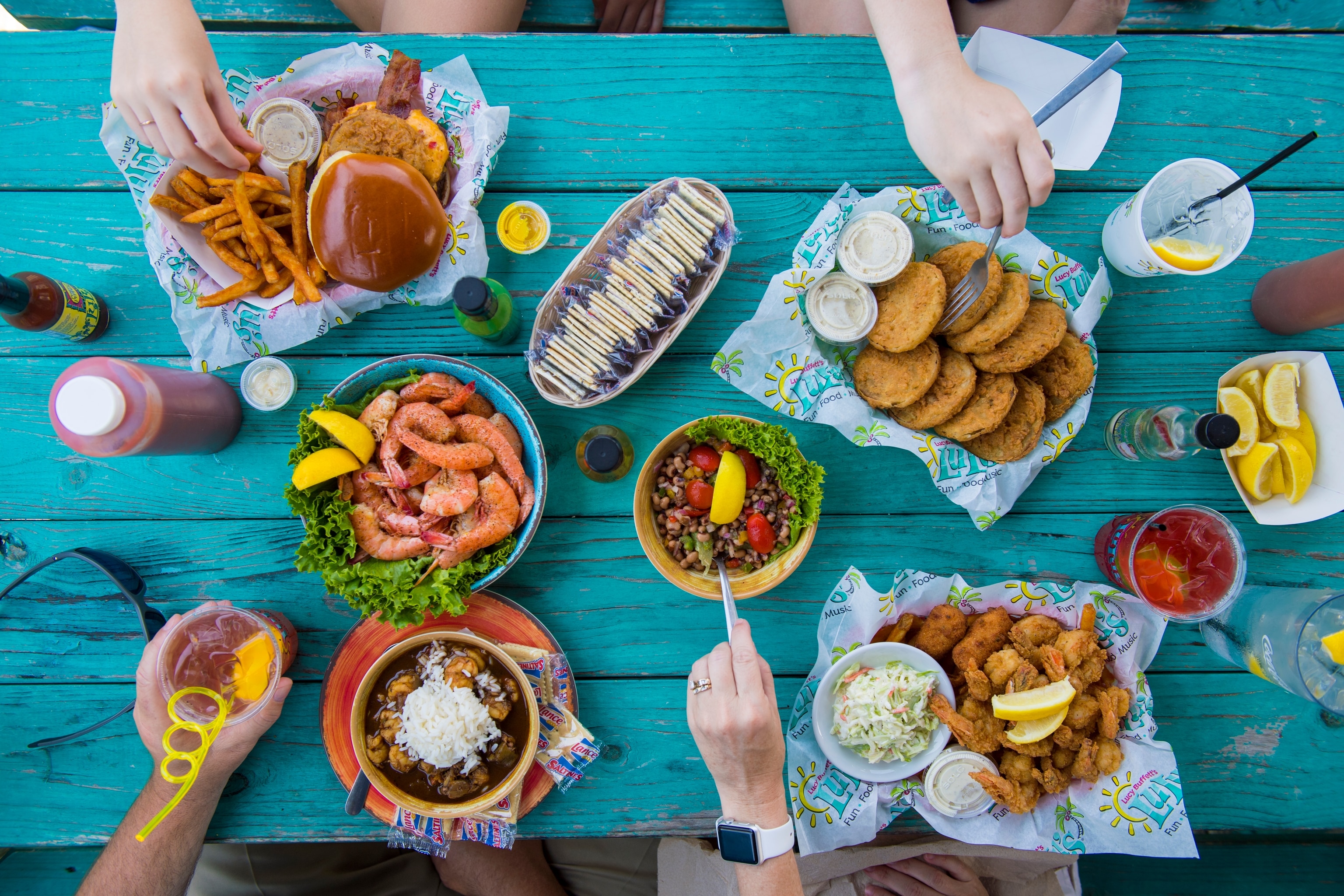
8. Join a distillery tour in Kentucky
Kentucky’s craft bourbon scene is having a moment. Last year, the state attracted a record-breaking two million visitors to tour its famous distilleries and meet the makers of what is officially ‘America’s native spirit’.
Bourbon is king in the Bluegrass State. This is a place where, at any given time, 11 million barrels of it can be found ageing in vast brick warehouses — that’s two barrels to every single Kentucky resident. Where a staggering 95% of the world’s bourbon is created, it’s complete with tours, tastings, bars and rural retreats that mix rolling paddocks with bourbon-soaked cuisine.
A great jumping-off point for exploring the state’s spirited bourbon industry is Louisville, Kentucky’s largest city, situated on the banks of the Ohio River. Follow Louisville’s Urban Bourbon Trail to tour downtown distilleries, such as Evan Williams and Old Forester Distilling Co, and visit bars and restaurants getting seriously creative with bourbon and stroll along its storied Whiskey Row. This colourful block of cast-iron-fronted bourbon warehouses that’s seen a recent renaissance as hip speakeasy bars and distilleries make a welcome return.
At the Derby Café at The Kentucky Derby Museum, grab its ‘hot brown sandwich’, a local delicacy, and have a barside chat with Johnny ‘Bourbon’ Arnett, the clued-up mixologist who can race you through the impressive collection of 170 bourbons lining the shelves behind him. But you really can’t go wrong with a classic mint julep cocktail, the official drink of the Kentucky Derby, a heart-pumping horse race dubbed the ‘greatest two minutes in sports’. ZG
9. Sit down to barbecue in South Carolina
Not far from the North Atlantic Ocean and home to acres of cultivated farmland, South Carolina offers an abundance of fresh ingredients. Farm-to-table has long been a way of life here and, at weekends, bustling farmers’ markets sprout up across the state. A couple of standouts include West Columbia’s epic State Farmers Market, scaled up to the size of a sprawling village dedicated to the art of gastronomy, Greenville’s Saturday Market, Columbia’s Soda City Market and Aiken’s Farmers Market in the Alley, where customers are serenaded by live music.
Heading down to the state’s coast, chefs buy their catch of the day directly from the docking fishing boats. In Charleston, food trucks are scattered along the streets, selling hot new takes on creole classics, washed down with refreshing sips of sweet, iced tea.
Each US state puts its own unique stamp on barbecue and in South Carolina, they keep things tangy with the state recognised official sauces. Mustard, vinegar and pepper, light tomato and heavy tomato are all poured over succulent smoky pork, cooked low and slow. In Charleston, Rodney Scott’s mastery as a whole hog pitmaster has made him a James Beard Foundation Award-winning barbecue celebrity. But those in the capital of Columbia will also find a standout barbecue joint: Southern Belly BBQ is an experimental meat-lover’s dream, serving up fresh updates on classic US grills, including a Hawaiian-influenced luau pork sandwich, topped with grilled pineapple and Maui onions. Finally, be sure to stop by One Hot Mama’s for authentic and delicious barbecue flavours. ZG
To discover more about each of these nine states in the US and how to book your next trip, visit travelsouthusa.com

